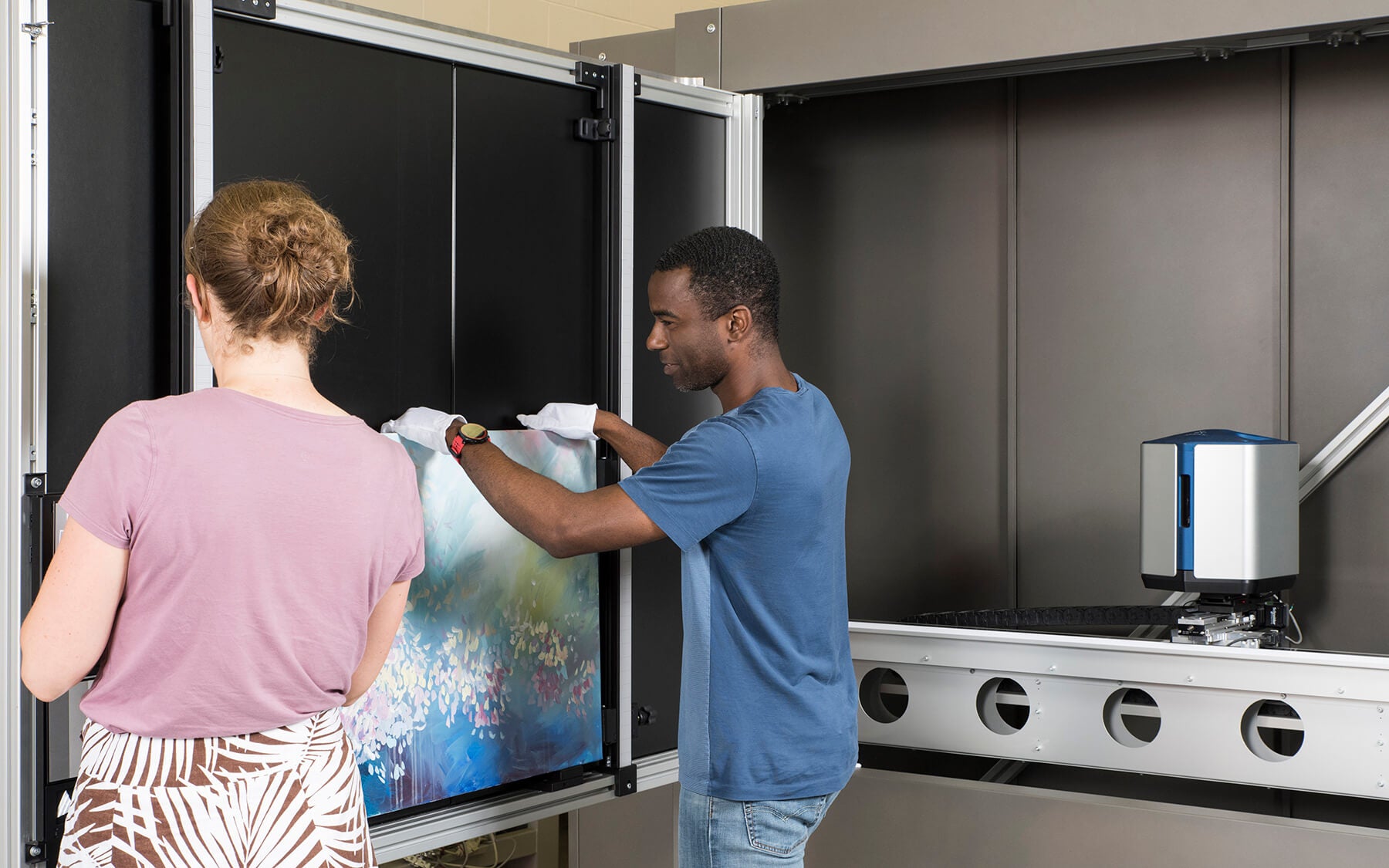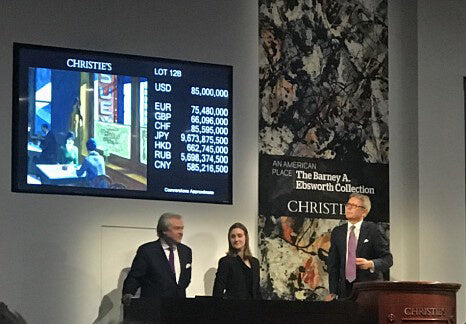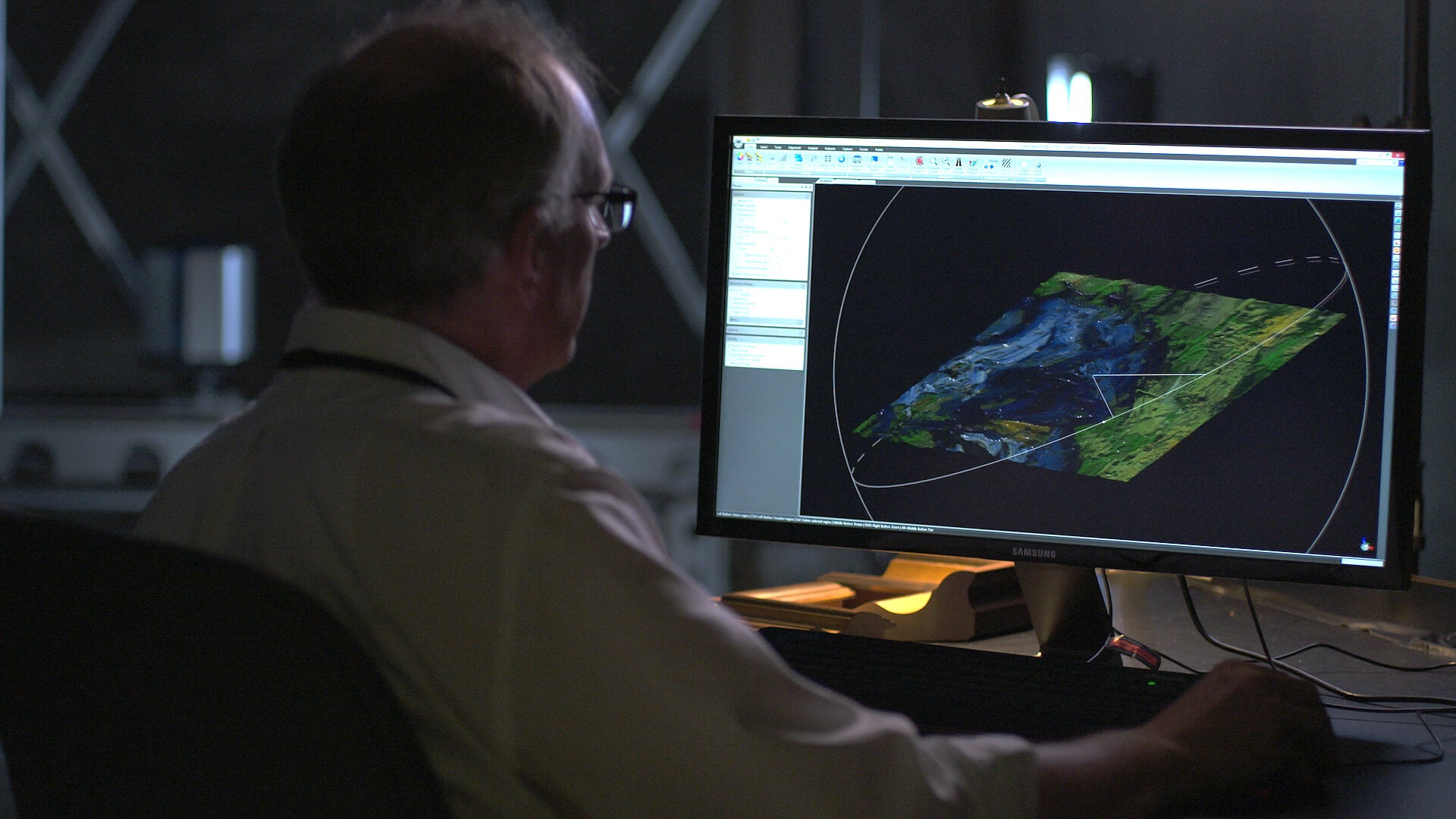
Arius Bolsters the Art Market’s Blockchain-Based Artory Registry with 3D Scan Data.
As featured on Hyperallergic, Arius and Artory have partnered to integrate high-fidelity 3D scan data within Artory’s blockchain based art registry; together, revolutionizing the art industry’s approach to provenance, authenticity, and condition reporting.
Last week Arius CEO, Paul Lindahl, took to the stage at the second edition of UNFOLD Art Xchange, as part of Bahrain’s annual ARTBAB fair. Joining a panel discussion about “The Blockchain Art Market Revolution: Improving Provenance and Transparency for the Art Market”, it was the perfect time to announce our partnership with Artory, who’s CEO, Nanne Dekking, was also on the panel.

As the art market continues to cast a spotlight on blockchain technology, a lot of questions have been raised about the quality of information being added to various registries, and how this market will help the art-world move towards a more transparent marketplace, without compromising the privacy of buyers, sellers and collectors in general.
Arius recognizes the opportunities for both new and traditional art organizations to leverage our rich data sets, and sees blockchain registry as an essential part of creating a ‘cultural seedbank’ that helps safeguard our heritage for generations to come.
Partnering with Artory felt like a natural step towards this goal, as their world-leading Artory Registry uses only vetted and verified sources to track provenance for art and collectibles, creating the industry’s first object-oriented database.
In a bid to secure the most reliable art market data, last November Artory collaborated with Christie’s auction house with an industry-first project to register the entire catalogue of artworks in the Barney A. Ebsworth Collection on their blockchain based Artory Registry.

Edward Hopper’s “Chop Suey”, breaking a record of over $91M USD. Photo Credit: Artory.
In another world-first partnership, Artory is expanding its tight network of trusted data sources by utilizing data that Arius Technology has captured via high resolution 3D scans of paintings. Working directly with museums and private collections, our 3D scan data maps every surface detail of an art object, recording both the geometry and colour of each brushstroke. With details finer than 1/10th of a human hair, Arius scans can detect features that are invisible to the human eye, setting a new standard for condition reporting and future authentication efforts.
As Artory’s Nanne Dekking explains,“
The Registry we are creating supports the art marketplace and helps them, along with banks, insurance companies, and other service providers, to communicate with millions of art lovers. The challenge is not with the technology, but rather with the kind of information you are actually securing with blockchain. The technique, as such, doesn’t make information more reliable. But rather, by working with data only from distinguished partners such as auction houses, galleries, living artists, and museums to create records with credible information, the Artory Registry reduces the risk of permanently recording poor quality information on the blockchain, while still bringing all the benefits that registering provides.”

Arius engineers process the 3D scan data of paintings, recording information for the geometry and colour of every brushstroke.
With the opportunity to include 3D scan data about the physical condition of artworks, Arius is effectively providing a 3D fingerprint of the surface of a painting. Such data can be used for verification of the same piece in years to come, as well as being used to detect even the earliest signs of degradation. This helps collectors plan essential conservation projects, as well as aiding professionals to accurately value a piece throughout its lifetime, based on its condition.
“Including timestamps of our 3D scan data within the Artory Registry is an exciting opportunity for the marketplace to create centralized, trusted records about any painting. Over time, we hope to see blockchain technology, like the Artory Registry, underpin the development of a “cultural seedbank”, where records like our scan data can be protected for generations to come.” Arius CEO, Paul Lindahl
As the art market continues to show interest, and enthusiasm, towards blockchain technology, it’s an exciting time to be a part of a shift in art market practices thanks to technological disruption. Follow us on social media for the latest Arius news and updates in the art technology market!
Leave a comment
Comments will be approved before showing up.
Also in News

Turning Back Time on Turner - An Arius Technology Digital Restoration Prototype

The Art of Insuring Art: A Practical Guide for Insuring Your Art Collection

